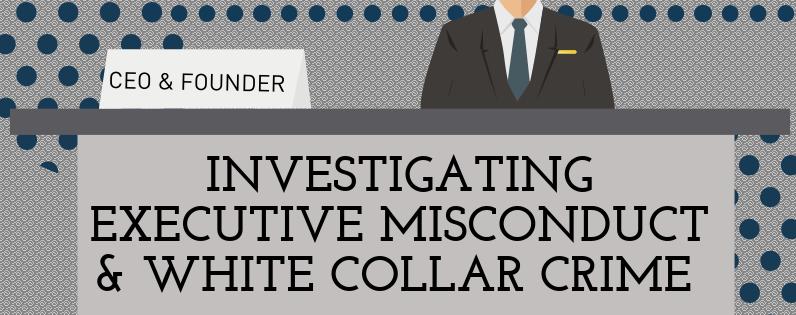5 Cyber Security Measures Every Business Needs
Cyber criminals are evolving at an alarming rate. Cyber-security product developers are on an infinite loop with felons, each trying to out fox the other with regards to data breaches. Security is absolutely necessary for brick and mortar establishments due to a myriad of reasons, but in 2019, the name of the game is cyber-security. […]
Investigating Executives & White Collar Crime

Don’t let executive misconduct ruin your corporation… When it comes to running a business, the executives who are the visionaries and decision-makers that shape a company should always remain above reproach. White collar crimes have the potential to pull a business up from the root with devastating consequences. Unfortunately, Americans know from media coverage and […]
Phishers Want Your Direct-Deposit
The invention of direct-deposit payments in electronic banking have likely saved companies millions of dollars over the years in labor hours, materials, and fees that previously caused problems for companies. However, in an age where your paycheck is sent automatically to your checking account, phishers are seeking to exploit this automation for personal gain. The […]
Don’t Wait to Hire a Private Investigator
Every business—from the mom-and-pop shop to corporate America—will encounter some form of crisis during their operation. Crises come in all shapes and sizes, including employee malingering, internal theft, brand protection, and a myriad of lawsuits that could bring an established business to its knees. When disaster strikes, it is the reflex of most companies to […]
SIM Card Swapping Scams Leave Businesses Vulnerable
Smartphones have become such an integral part of our everyday lives that many users joke their devices have become grafted to their hands. We use them to maintain contact in our work and personal lives, correspond through email and social media, and a bulk of Americans have made the transition to conducting their banking through […]
Predators Use Online Gaming to Groom Minors
Advances in technology are constantly changing the dialogue about how we protect our children from potential predators. Over the last decade, parents have had to reform their strategy when it comes to protecting their child in the real world. Before, parents cautioned their kids on stranger danger, special code words, and remaining aware of their […]
Disconnect: Helping Adopted Children Find their Birth Parents
As the Western idealization of a family unit continues to grow and change, more and more parents are either opting to place their child for adoption or adopt themselves rather than have a biological child. As such, adoptions are on the rise. The Adoption Network estimates the number of children in foster care at any […]
Private Investigators Buy Peace of Mind in Child Custody Cases

Divorce and child custody are polarizing topics in the United States. Divorce itself is an ugly business. Two people who stood in front of their friends and families and promised themselves to another now find themselves in a situation where the life they built together is over. Often it is a storm of heightened emotions, […]
Virtual Kidnapping incidents on the rise
You receive a phone call and hear the voice of someone you don’t recognize. They tell you they have your child and will kill them unless you pay a ransom – they direct you not to call police or you will never see your child again. What would you do? You tell the person on […]
ShutDown: Consumer Fraud Investigations Halted
